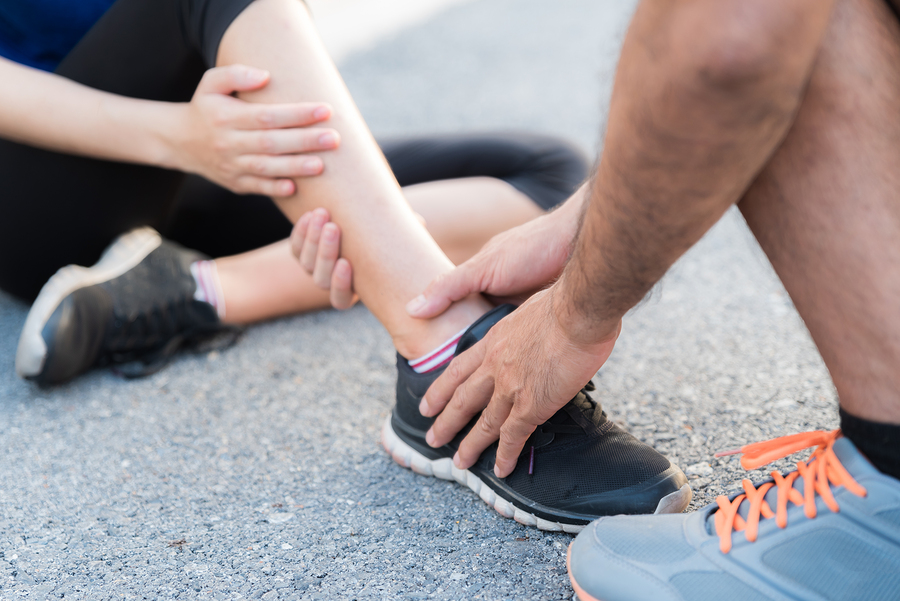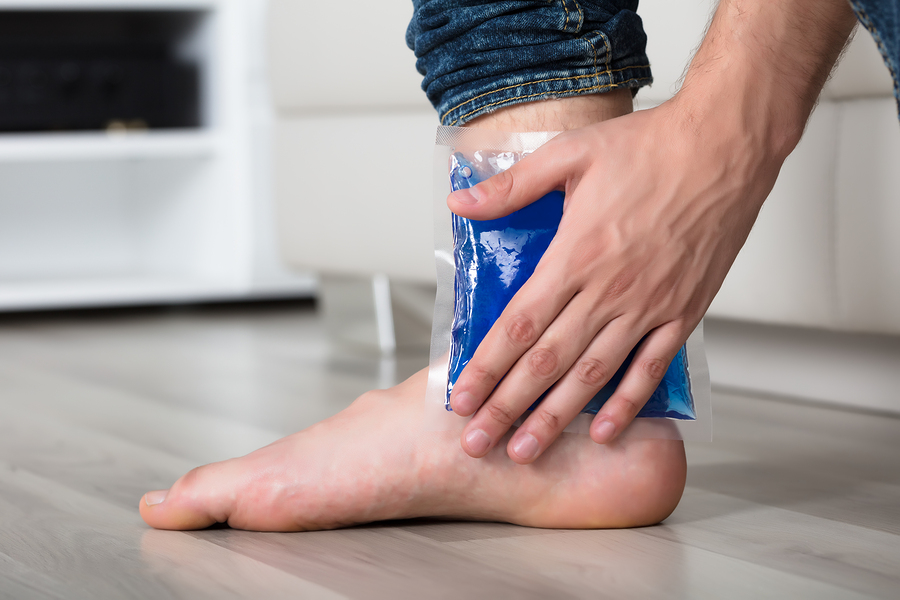Strains, sprains, tomato, tom-ah-to…
While they may sound pretty close, the truth is that strains and sprains are two completely separate issues, and as such, require slightly different treatments.
Due to their similar-sounding names however, many people wind up using the two terms interchangeably – something that our Highett physio hears all the time!
It’s true that strains and sprains refer to damage to soft tissues in the body, and share many similar symptoms. However, that’s where the similarities end.
Today, we’ll be explaining the difference between these two common injuries, and how that affects your treatment plan…
What’s a sprain?
Ligaments are tough bands of fibrous tissue that play a crucial role in your joints. Specifically, ligaments are what hold the entire joint together, and are responsible for connecting bones to other bones.
And as the thing that holds your joints together, sprains can prove to be especially debilitating, and can drastically affect your lifestyle.
Sprains involve stretching and tears in these crucial tissues, and are often the result of overuse, damage or wear-and-tear. While they can heal on their own, it takes time, and can force you to change your lifestyle in the meantime.
In addition, just because the tissue may heal, doesn’t mean your back to normal.
For eg: when you sprain your ankle mildy the ligament may heal, but your strength, endurance and balance will still be compromised if you neglect physio – leaving your odds of re-injury much higher.
A sprain can occur in just about any joint – fingers, wrists, elbows, you name it – in our Highett physio’s experience however, the knee and ankle are the most common culprits, owing to the amount of work they do and the stress they put up with on a daily basis.
Sprains are graded depending on the severity, ranging from grade 1 sprains (minor stretching and tears) to grade 3 (complete tears).
Okay, so what’s a strain then?
If sprains are all about ligaments, then strains are all about muscles and tendons.
Your muscles need no introduction – they’re what allow you to work, hit the gym and carry out your day-to-day routine.
Connecting your skeletal muscles to your bones (as well as to each other) are your tendons.
When damage occurs to either of these important parts of your musculoskeletal system, you’re left with a strain.
Strains can occur over time (chronic) or suddenly (acute).
For example, certain sports or poor ergonomics at work such as running can result in chronic strains developing over time, whereas acute strains may be the result of a specific action, such as a fall or pushing your muscles too far.
Other differences between strains and sprains
The main difference between strains and sprains is what’s affected – sprains affect ligaments, while strains affect muscles and tendons.
While this is the main point of difference, there are several others…
Sprains will always affect a joint, whereas strains can occur anywhere
That’s because ligaments are found in joints – ergo, sprains will only ever be encountered in your joints.
By contrast, muscles are found all over your body.
Theoretically, you could encounter a strain anywhere in your body, from heavy-lifters like your glute muscles to rare cases like tongue strains!
The upshot of this is that it makes diagnosing your pain significantly easier.
If you’re unsure about whether you’re afflicted with a strain or a sprain, just focus on where the pain is presenting and you’ll find the answer.
Unique symptoms
While there are certain shared symptoms (swelling, pain, restricted movement), strains and sprains have unique symptoms too.
For example, muscle strains may often accompanied by muscle spasms.
In physio jargon, spasms refer to involuntary contractions in your muscles, and can take the form of twitches, cramping and knots.
Spasms affect your muscles specifically – as such, you won’t experience muscle spasms if you’ve sprained one of your joints.
Treating sprains and strains
While minor cases of strains and sprains will recover on their own and can be treated at home, we strongly recommend getting in touch with a physiotherapist if you want to make a full recovery.
Depending on the severity of your strain or sprain, we’ll create a tailored treatment plan that helps you return to a pain-free life!
The importance of exercise, stretches and physical manipulation
Exercises form the cornerstone of any treatment plan.
The idea is that these exercises and stretches slowly reintroduce motion to the affected joint or muscle, and serve to gradually rebuild joint and muscle strength.
When it comes to exercises and stretches, too little won’t make any beneficial change and too much may aggravate your injury further.
It’s important that you don’t push your body too far – you’re still recovering, after all.
However, as counter-intuitive as it may be, ‘resting’ for strains and sprains is actually NOT a good thing at all!
Luckily, your physiotherapist knows exactly how far you can push your body, and creates a tailored routine that won’t make things worse.
Your Highett physio may also perform manual therapy to relieve your pain and fast track your return to normal.
Joint mobilisation is one example of manual therapy that’s proven to be effective at relieving pain in affected joints and improving your range-of-motion, making it useful for many cases of sprains.
Remedial massage
In addition to physiotherapy, your physio in Highett may prescribe remedial massage therapy as a complement to physical therapy.
Unlike a regular back rub, remedial massage is a deeper massage that applies pressure directly to specific parts of the body with the goal of relieving pain. Massage serves as an inhibitor of pain signals, and activator of certain muscle fibres which can supercharge your return to feeling and performing 100%.
Additionally, it also enhances blood circulation (and therefore promotes the flow of the all-important white blood cells to affected muscles and joints).
A physio in Highett explains why R-I-C-E may not be the best idea
When you Google treatments for sprains and strains, you’ll probably notice that many of the results promote R-I-C-E:
- Rest
- Ice
- Compression
- Elevation
It’s an old technique that has been used for decades. But the fact is, there really isn’t much evidence to support the R-I-C-E movement.
There’s little evidence supporting the idea that R-I-C-E can speed up your recovery. In fact, some researchers suggest that it can actually delay recovery!
Let’s start with the “ice” part of the recipe. Ice is often suggested by parents to reduce pain and swelling, which are common symptoms of sprains and strains.
The problem is that swelling is good for you! This is your body is flooding the area in white blood cells and other helpful antibodies. By stopping the swelling, R-I-C-E can be slowing down healing!
Now, obviously there are exceptions to every rule.
For eg: If you’ve ever watched the UFC on TV, you may notice the cutmen using ice or like substitutes as a quick fix to keep swelling away from the fighters’ eyes which may threaten an early stoppage.
Also, some people are just used to slapping ice on something that hurts and that placebo effect is very powerful.
So whilst it’s not ‘illegal’ or ‘terrible’ to use ice, oftentimes just as much benefit is achieved without it.
Additionally, in many cases it’s more beneficial to stay active during the recovery stage than resting. Your body operates on the “use it or lose it” principle – if you stay off the affected muscle or joint for too long, you may find it weaker post strain or sprain.
To get around this, your physio in Highett prescribes exercises and routines that allow you to safely keep the affected part of your body active.
We are however fans of using compression to alleviate symptoms.
Not only does this prevent it from decaying as the weeks go by, but it gives you an easier time getting back into your routine afterwards once it’s healed!
Learn more about R-I-C-E, and why it doesn’t work.
Strain or sprain? Either way, our Highett physio can help!
If you’ve strained a muscle or sprained a joint, the first thing you should do is call and book a session with your local physiotherapist!
Seriously, it’s so much easier if you just get onto it and do it right the first time.
At Physio AUS, we’re experts at helping people like you recover from musculoskeletal issues, including strains and sprains.
Using our unique AUS system, we’ll get to the heart of the issue.
This allows us to prescribe unique solutions. In addition to tailored routines and stretches, we’ll also look at whether physical manipulation will help, as well as technique.
Many of our cases are athletes or labourers who’ve come to us for muscle or joint pain. Our experienced physios will analyse your technique and determine if that is a contributing factor. If it is, we’ll help adjust your technique, reducing the chances of your pain returning.
All part of the service.
Get to the bottom of your pain today – call our Highett physio on (03) 9525 6077, or click here to book online.

 1300 392 552
1300 392 552

Leave A Comment